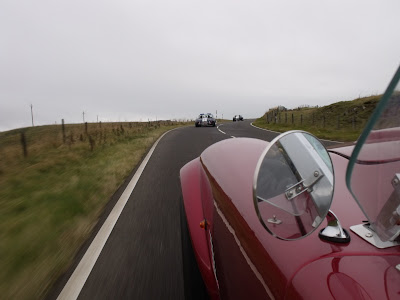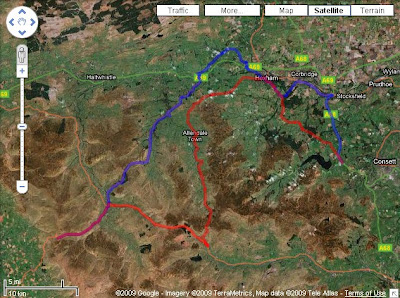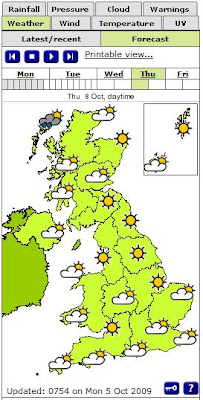So.... I have a small bumpsteer issue to resolve. On the 180 mile drive back from GD I paid particular attention to the characteristics that were being exhibited.
When encountering a "bump" the very slight pull on the steering feel wheel seemed to be associated with the extension phase of the damper as opposed to the compression phase. It is not really a significant effect - but you know what it's like once someone points something out to you and you can't help but keep noticing it!
I looked back at the graph I posted when I did the original measurements:
I also measured the "ride height"damper length and found it to be 12 inches. So if you look at the green line and assume a normal damper range of +/- 1 inch you can see I should be expecting a range of around 13 arc seconds change in toe per wheel - Now 13 arc seconds is pretty small - in fact t is 13 /3600's of a degree - so why do I appear to be getting some bumpsteer effect.
I'll tell you why.... 'cos after racking my brains I discovered I had cocked up my calculations - the scale for the green line should read arc minutes not arc seconds!!!
Now I ignored the effect because I thought 13 seconds was negligible - which it is. 13 minutes is not!! especially when you consider that I am running 10 minutes of total toe-in on the front!!
Bugger!
I was kind of led down this path of ignoring the effect as it was small due to the fact that I ran out of adjustment on the steering rack mounts. To get rid of the toe-out bumpsteer effect I needed to raise the rack - but I was at the end of the slotted holes - "it's only 13 seconds so I'll leave it"
Andy had recommended that I reduce the castor angle - this will also have the effect of lowering the front of the steering arm (i.e the same effect as raising the steering rack). So this should give me back the adjustment I had lost.
So the plan will be to "swap" one /some of the castor shims over from the front to the back and then get the mirror and laser out to re-check the bumpsteer effect and take it from there.
To avoid further cock-ups I have drawn out the laser and mirror method of measuring bumpsteer on AutoCad and have confirmed that it is a valid and accurate method.
Changing Castor angle and rack height will of course necessitate re-setting the front toe-in.
All in all a bit of an annoyance - but at least everything makes sense - the theory now matches up with the practical experience.
So if you end up running a lot of castor to get the steering to self centre for SVA/IVA don't be surprised if you can't get the adjustment to elliminate all the bumpsteer. You'll have to change it afterwards.









 All in all a good 100 mile run out with pleny of interesting roads. As usual the map of the route is below which you can click on and be taken to the details on google maps.
All in all a good 100 mile run out with pleny of interesting roads. As usual the map of the route is below which you can click on and be taken to the details on google maps.

 Despite my best efforts I could not reduce the effects to any less than this - nor could I
Despite my best efforts I could not reduce the effects to any less than this - nor could I 






